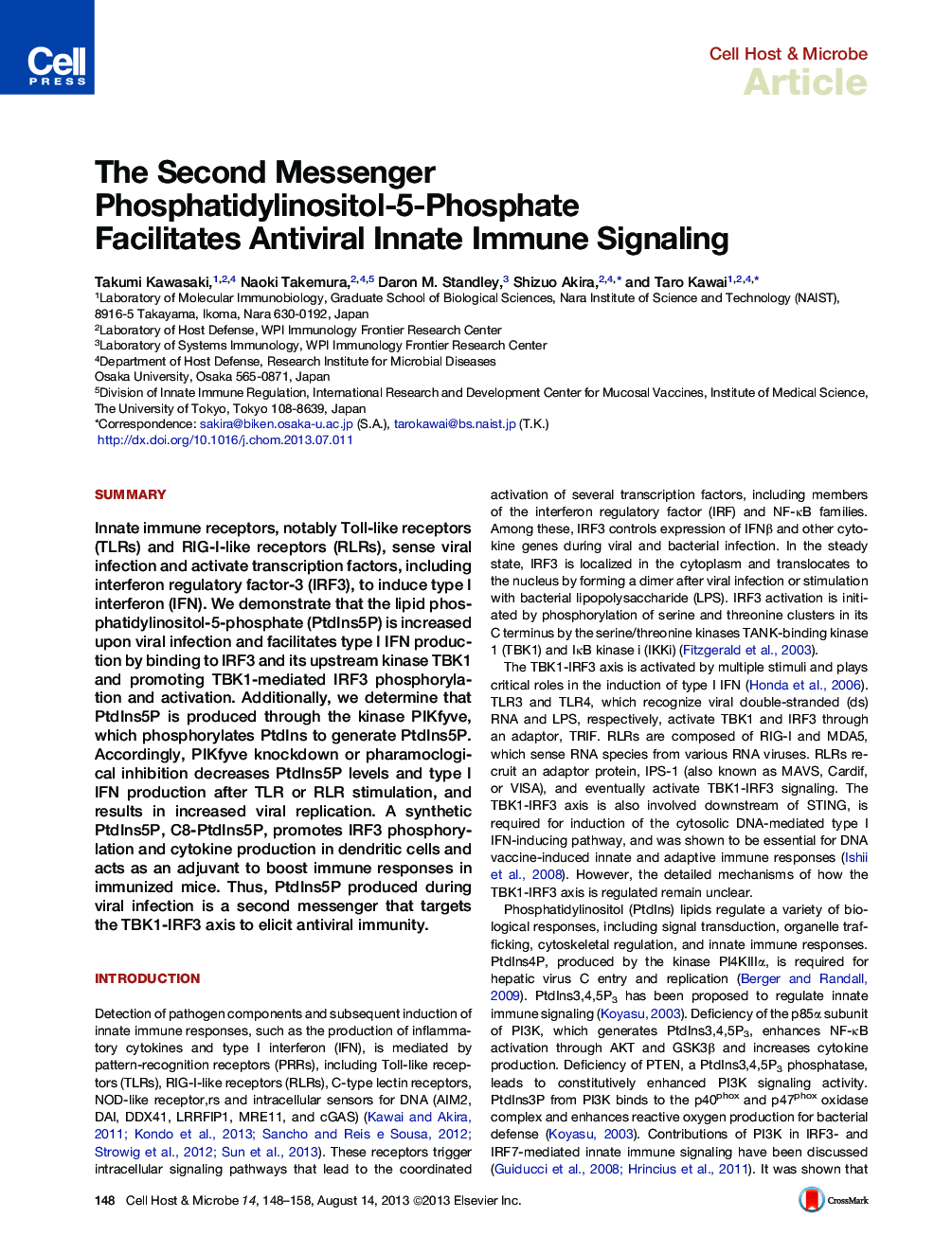| Article ID | Journal | Published Year | Pages | File Type |
|---|---|---|---|---|
| 4361041 | Cell Host & Microbe | 2013 | 11 Pages |
•PtdIns5P produced by the kinase PIKfyve facilitates antiviral responses•PtdIns5P promotes activation of the TBK1-IRF3 axis and Type I interferon production•PIKfyve inhibition decreases Type I interferon production and increases viral titers•A synthetic PtdIns5P exhibits adjuvant properties and promotes immune responses in vivo
SummaryInnate immune receptors, notably Toll-like receptors (TLRs) and RIG-I-like receptors (RLRs), sense viral infection and activate transcription factors, including interferon regulatory factor-3 (IRF3), to induce type I interferon (IFN). We demonstrate that the lipid phosphatidylinositol-5-phosphate (PtdIns5P) is increased upon viral infection and facilitates type I IFN production by binding to IRF3 and its upstream kinase TBK1 and promoting TBK1-mediated IRF3 phosphorylation and activation. Additionally, we determine that PtdIns5P is produced through the kinase PIKfyve, which phosphorylates PtdIns to generate PtdIns5P. Accordingly, PIKfyve knockdown or pharamoclogical inhibition decreases PtdIns5P levels and type I IFN production after TLR or RLR stimulation, and results in increased viral replication. A synthetic PtdIns5P, C8-PtdIns5P, promotes IRF3 phosphorylation and cytokine production in dendritic cells and acts as an adjuvant to boost immune responses in immunized mice. Thus, PtdIns5P produced during viral infection is a second messenger that targets the TBK1-IRF3 axis to elicit antiviral immunity.
